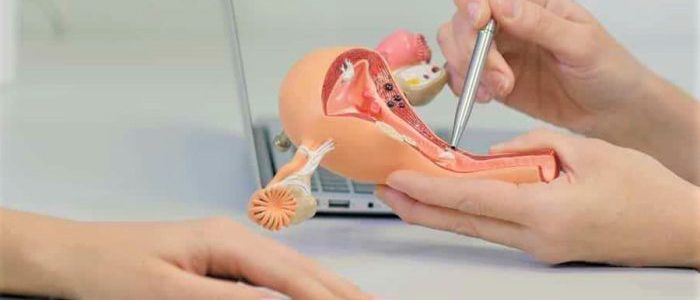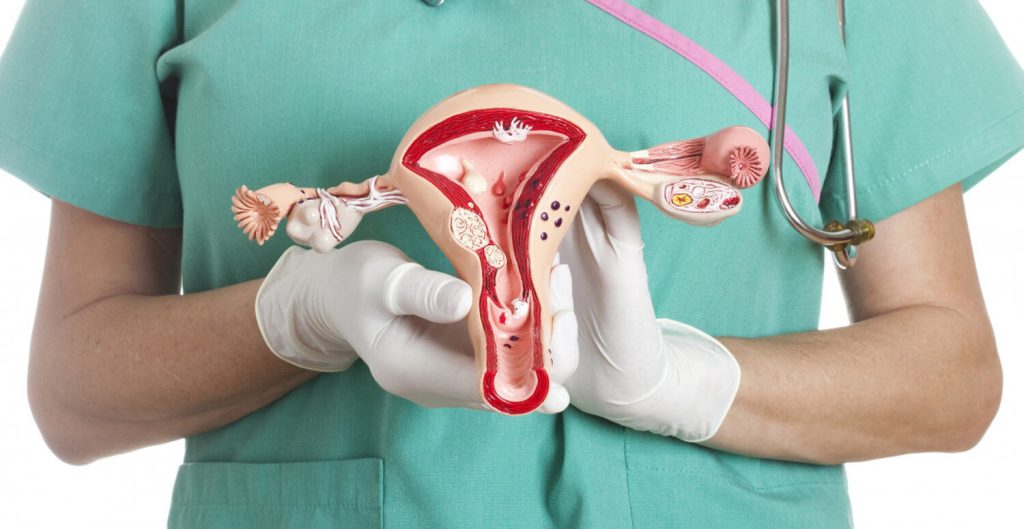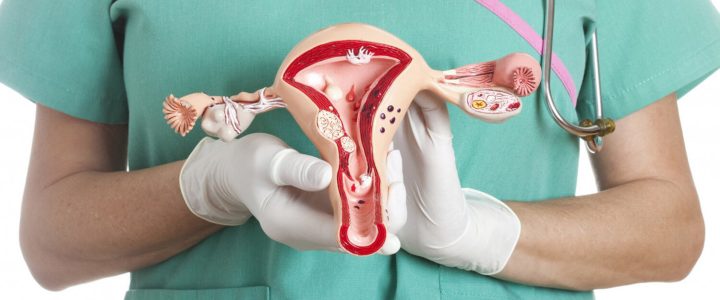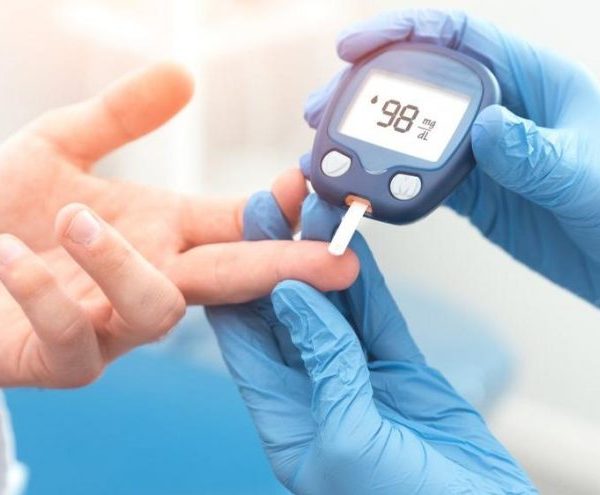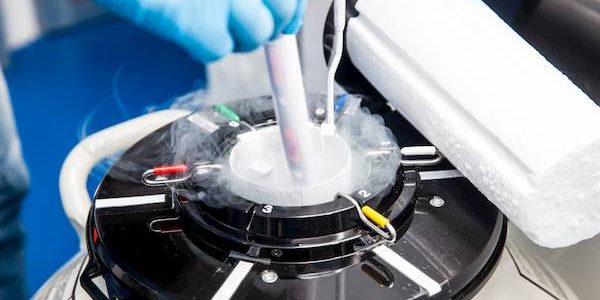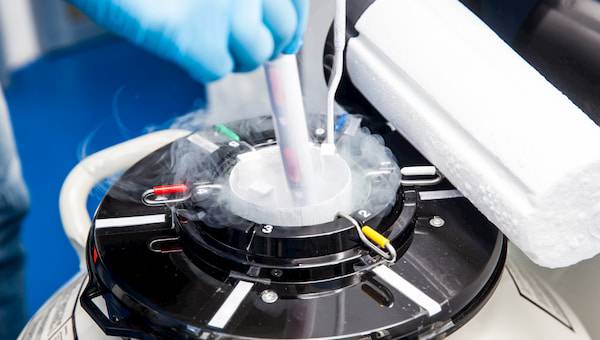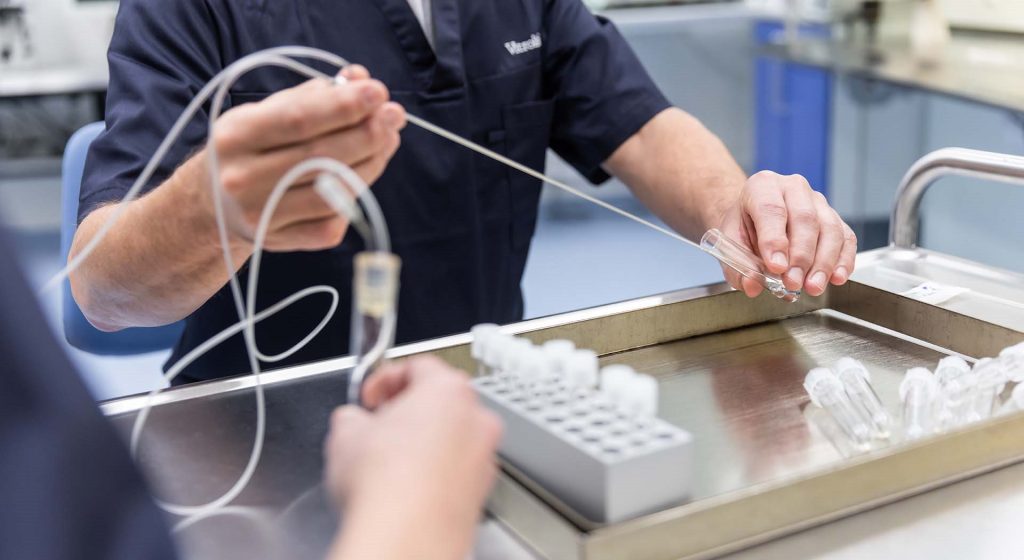Understanding The Purpose Of Ultrasound
When Can the Baby Be Seen on Ultrasound? Ultrasound is a common medical procedure used for various purposes in healthcare settings. It utilizes sound waves to create images of the inside of the body, making it a valuable tool in diagnosing and monitoring medical conditions. One of the main purposes of ultrasound is to visualize and monitor the development of a fetus during pregnancy. By using high-frequency sound waves, healthcare professionals can obtain detailed images of the baby and the surrounding structures inside the mother’s womb.
During pregnancy, ultrasounds are crucial for assessing the growth and development of the fetus. They can provide valuable information about the baby’s positioning, size, and overall health. The first ultrasound scan, often known as the dating scan, is typically performed around 8 to 14 weeks of pregnancy. This early scan helps confirm the gestational age, estimate the due date, and detect any potential abnormalities. It also allows parents to see the baby for the first time.
As the pregnancy progresses, additional ultrasounds may be conducted to check the baby’s growth and development. Depending on the healthcare provider’s recommendations and specific circumstances, these scans can take place during different stages of pregnancy. The anatomy scan, usually performed around 20 weeks, is particularly important as it examines the baby’s organs and detects any structural abnormalities. Subsequent ultrasounds may be conducted if there are concerns about the baby’s well-being, such as reduced fetal movement or potential complications.
- The purpose of ultrasound during pregnancy is not only limited to assessing the baby’s well-being. It also allows healthcare professionals to monitor the mother’s reproductive organs and detect any potential issues, such as fibroids or ovarian cysts.
- Ultrasound is a non-invasive and safe procedure for both the mother and the baby. The sound waves used during the scan do not pose any known risks or harm.
- The information obtained from ultrasounds can help healthcare providers make informed decisions regarding prenatal care, delivery plans, and potential interventions if necessary.
| Weeks of Pregnancy | Purpose of Ultrasound |
|---|---|
| 8-14 | Dating scan to confirm gestational age |
| 20 | Anatomy scan to assess baby’s organs |
| Subsequent weeks | Monitoring baby’s growth and well-being |
In conclusion, ultrasounds play a crucial role in prenatal care by allowing healthcare professionals to visualize and monitor the development of the baby. From confirming the gestational age to assessing the baby’s overall health, ultrasounds provide valuable information for both parents and healthcare providers. Understanding the purpose of ultrasound during pregnancy helps expectant parents stay informed and actively participate in the care and well-being of their unborn child.
Developmental Milestones For Ultrasound Visibility
Ultrasound imaging has revolutionized the field of prenatal care, providing expectant parents with a window into the development of their unborn child. One of the most exciting moments during pregnancy is when parents get to see their baby on the ultrasound screen for the first time. But when exactly can the baby be seen on ultrasound? Let’s explore the developmental milestones that contribute to ultrasound visibility throughout the various stages of pregnancy.
During the first trimester, around 5-8 weeks gestation, the baby is still in its early stages of development. At this point, the embryo is gradually forming its organs and structures. While the baby may not be clearly visible on ultrasound during this time, the yolk sac can often be seen. The yolk sac plays a crucial role in providing essential nutrients to the developing embryo until the placenta takes over this function.
As the pregnancy progresses into the second trimester, typically around 13-16 weeks, the baby’s development undergoes significant changes. By this stage, the baby has developed most of its major organs and structures, making it more easily visible on ultrasound. At this point, parents can see the baby’s head, body, arms, and legs. The baby’s gender may also be determined during this time, depending on factors such as positioning and the expertise of the sonographer.
- First trimester (5-8 weeks): Yolk sac visible on ultrasound.
- Second trimester (13-16 weeks): Baby’s head, body, arms, and legs become visible. Gender determination may be possible.
During the third trimester, from around 25 weeks until birth, the baby’s growth and development continue at a rapid pace. By this stage, the baby has developed a layer of fat under the skin, giving it a more defined appearance on ultrasound. The baby’s movements can also be observed, as well as its position within the uterus. This allows healthcare professionals to check for normal fetal movement and ensure the baby is in the correct position for delivery.
In conclusion, the visibility of the baby on ultrasound depends on the developmental milestones achieved throughout the pregnancy. From the yolk sac in the first trimester to the fully formed baby in the second trimester, and the well-developed features in the third trimester, each stage brings new and exciting opportunities for parents to witness the growth of their unborn child. Ultrasound imaging offers a remarkable glimpse into the life of the baby, providing reassurance and a connection between parents and their little one.
| Trimester | Developmental Milestones |
|---|---|
| First trimester | Yolk sac visible |
| Second trimester | Baby’s head, body, arms, and legs become visible. Gender determination may be possible. |
| Third trimester | Baby has layer of fat, visible movements, and proper positioning within the uterus. |
Ultrasound Detection In The First Trimester
The first trimester of pregnancy is a crucial time for prenatal care, and one important aspect of this care is ultrasound detection. Ultrasound is a non-invasive imaging technique that uses sound waves to create images of the developing fetus. It has become an essential tool in monitoring the health and development of the baby throughout pregnancy.
During the first trimester, ultrasound detection can occur as early as five to six weeks gestation. At this stage, the pregnancy is still in its early stages, and the baby is just starting to form. The main purpose of an ultrasound during this time is to confirm the pregnancy and determine the presence of a fetal heartbeat. This information is vital in establishing the viability of the pregnancy and ruling out any potential complications.
Ultrasound detection in the first trimester can also provide valuable information about the gestational age of the baby. By measuring the size of the embryo or fetus, healthcare providers can estimate the due date more accurately. This is especially important for women with irregular menstrual cycles or those who are unsure about the date of their last period. Knowing the gestational age helps healthcare providers plan appropriate prenatal care and monitor the baby’s development.
- Additionally, ultrasound detection in the first trimester can help identify multiple pregnancies. Twins or other multiples are more common in certain populations and age groups. Early identification of multiple pregnancies allows healthcare providers to monitor these pregnancies more closely and provide appropriate care.
| Benefits of Ultrasound Detection in the First Trimester |
|---|
| 1. Early confirmation of pregnancy |
| 2. Determination of gestational age |
| 3. Identification of multiple pregnancies |
| 4. Assessment of fetal heartbeat |
Technology has advanced significantly, enabling healthcare providers to obtain clearer and more detailed images during the first trimester. This enhances their ability to detect any potential abnormalities or developmental issues early on. Early identification of such conditions allows for timely interventions and appropriate management to optimize the outcome for both the mother and the baby.
In conclusion, ultrasound detection in the first trimester is a vital component of prenatal care. It provides essential information about the viability of the pregnancy, the gestational age, and the presence of any abnormalities or multiple pregnancies. This early detection allows for appropriate monitoring and interventions, ensuring the best possible outcome for both the mother and the baby.
Enhancing Visibility In The Second Trimester
During pregnancy, one of the most exciting moments for expectant parents is seeing their baby on ultrasound. It is a magical experience that enhances the bond with the unborn child. However, as the pregnancy progresses, the visibility of the baby on ultrasound can become more challenging, especially during the second trimester. Fortunately, there are several techniques and considerations that can be employed to enhance visibility and ensure a clear and detailed ultrasound image.
One important factor to consider when aiming for better visibility in the second trimester is the timing of the ultrasound. Generally, the optimal time for an ultrasound during this period is around 18 to 22 weeks of gestation. At this stage, the baby has developed enough and is large enough to be clearly seen on the scan. Additionally, the amniotic fluid levels are usually adequate, providing a clear medium for sound waves to travel through and produce a high-quality image of the baby.
Another factor to consider is the position of the baby:
- If the baby is in a favorable position, such as facing towards the ultrasound transducer, the visibility will be improved. The face, body, and limbs will be easily seen and assessed by the healthcare provider conducting the ultrasound.
- On the other hand, if the baby is in an unfavorable position, such as facing away from the transducer, it might be more challenging to obtain clear images. In such cases, the sonographer may ask the pregnant woman to change positions or move around to encourage the baby to change position as well.
The use of a full bladder:
During the second trimester ultrasound, it is often recommended for the pregnant woman to have a full bladder. This can help lift the uterus out of the pelvis and provide a clearer pathway for the sound waves to travel through. A clearer pathway ensures enhanced visibility of the baby. However, it is important to note that this recommendation may vary depending on the healthcare provider’s instructions, as certain factors or medical conditions may contraindicate a full bladder.
Lastly, having a skilled sonographer:
The expertise and skill of the sonographer performing the ultrasound play a crucial role in enhancing visibility. A well-trained sonographer will have the knowledge to maneuver the transducer and adjust the settings to optimize image quality. They can make the necessary adjustments based on different factors like maternal body habitus, the position of the baby, and other individual factors affecting visibility.
| Factors Affecting Visibility in the Second Trimester | Enhancement Techniques |
|---|---|
| Maternal body habitus | Expert transducer manipulation |
| Uterine position | Maternal position changes |
| Amniotic fluid levels | Timing of the ultrasound |
Overall, enhancing visibility in the second trimester requires a combination of factors, including optimal timing, favorable baby position, bladder status, and the skill of the sonographer. By considering these factors and employing the appropriate techniques, expectant parents can enjoy a clearer and more detailed glimpse of their growing baby during this exciting stage of pregnancy.
Considerations For High-Quality Ultrasound Scans
High-quality ultrasound scans are essential for effectively monitoring the development of a baby during pregnancy. These scans provide detailed images of the baby in the womb, allowing healthcare professionals to assess various aspects of the pregnancy. However, there are several considerations that need to be taken into account to ensure the best possible quality of ultrasound scans.
One important consideration is the timing of the ultrasound scan. The optimal time to perform the scan may vary depending on the purpose of the scan. For example, if the aim is to determine the baby’s gender, the scan is typically done at around 18 to 20 weeks of pregnancy. On the other hand, if the scan is to assess the baby’s growth, it may be conducted at different stages throughout the pregnancy.
Another consideration is the equipment and technology used for the ultrasound scan. The quality of the ultrasound machine and the skill of the sonographer can significantly impact the clarity and accuracy of the images obtained. High-end machines with advanced capabilities can provide more detailed and precise images. Similarly, experienced and well-trained sonographers are able to identify and capture important details during the scan.
- Factors Affecting Visibility: Various factors can affect the visibility of the baby during an ultrasound scan. These factors include the position of the baby in the womb, the presence of excess fat or gas, and the mother’s body habitus. Sonographers should be aware of these factors and make necessary adjustments to optimize visibility.
- Enhancing Visibility: Certain techniques can be employed to enhance visibility during ultrasound scans. This may involve adjusting the position of the mother, using different scanning angles, or applying gentle pressure to improve the visualization of specific structures. These techniques help in obtaining clear and comprehensive images of the baby.
In addition to these considerations, it is crucial to ensure the comfort and safety of the mother during the ultrasound scan. Clear communication and explanation of the procedure can help alleviate any anxiety or concerns. A relaxed and cooperative mother contributes to a smoother scanning process and better quality images.
In conclusion, high-quality ultrasound scans play a vital role in monitoring the development of a baby during pregnancy. To achieve the best results, considerations such as the timing of the scan, the equipment used, and the expertise of the sonographer should be taken into account. By addressing these factors and employing techniques to enhance visibility, healthcare professionals can obtain clear and detailed images that provide valuable information about the baby’s well-being.
| Ultrasound Visibility | Developmental Milestones | Pregnancy Confirmation |
|---|---|---|
| The Importance of Clear Images | Tracking Baby’s Growth | Confirming Pregnancy |
| Optimal Timing of Scans | Identifying Key Structures | Ensuring Accuracy |
| Impact of Equipment and Technology | Assessing Organ Development | Establishing Due Date |
Factors Affecting Visibility During Ultrasound
Ultrasound is a widely used medical imaging technique that allows healthcare professionals to visualize the internal structures of a patient’s body. It has proven to be particularly valuable during pregnancy, where it can provide valuable information about the development and well-being of the fetus.
However, there are several factors that can affect the visibility of the baby during an ultrasound. One of the most significant factors is the gestational age of the fetus. In the early stages of pregnancy, the baby is very small and difficult to see on an ultrasound. As the pregnancy progresses, the size of the baby increases, making it easier to visualize.
Another factor that can affect visibility is the position of the baby. The position of the baby in the uterus can vary greatly from one pregnancy to another. If the baby is positioned in a way that obstructs the view of certain structures, it can be challenging for the healthcare professional to obtain clear images.
- Fetal position: The baby’s position within the uterus can impact visibility during an ultrasound. If the baby is in a breech position or is facing away from the ultrasound probe, it may be difficult to obtain clear images.
- Obesity: In cases where the mother is overweight or obese, it can be more challenging to get clear ultrasound images. The layers of fat can interfere with the ultrasound waves, making it harder to visualize the baby.
- Amniotic fluid levels: The amount of amniotic fluid surrounding the baby also plays a role in visibility. Insufficient amniotic fluid can make it more difficult to visualize the baby and the surrounding structures.
In addition to these factors, the quality of the ultrasound equipment and the expertise of the healthcare professional performing the scan can also impact visibility. High-quality ultrasound machines and experienced operators are more likely to produce clear and detailed images.
| Factor | Effect on Visibility |
|---|---|
| Fetal position | Obstructed view, difficult to obtain clear images |
| Obesity | Interference with ultrasound waves, harder to visualize the baby |
| Amniotic fluid levels | Insufficient fluid can make it challenging to visualize the baby and surrounding structures |
In conclusion, several factors can affect the visibility of the baby during an ultrasound. These include the gestational age of the fetus, the position of the baby in the uterus, maternal obesity, and the amount of amniotic fluid. It is important to consider these factors when performing an ultrasound to ensure accurate and clear imaging. Additionally, using high-quality equipment and having skilled operators can further enhance visibility and improve the overall quality of the ultrasound scan.
Ultrasound Guidance For Pregnancy Confirmation
When it comes to confirming a pregnancy, ultrasound guidance is an essential tool for healthcare professionals. Ultrasound technology has advanced significantly in recent years, enabling doctors to detect and confirm pregnancy at an early stage. The ultrasound scan provides valuable information about the location, development, and viability of the pregnancy, as well as the gestational age of the fetus. This information is crucial for determining the next steps in prenatal care and ensuring the well-being of both the mother and the baby.
One of the most common ways to confirm a pregnancy is through a transabdominal ultrasound scan. This procedure involves applying a gel on the mother’s abdomen and using a transducer to send and receive sound waves to create real-time images of the uterus. The images can clearly show the presence of a gestational sac, which is an early sign of pregnancy. In some cases, the ultrasound scan can even detect the fetal heartbeat, further confirming the pregnancy.
In addition to the transabdominal ultrasound, there is also the option of a transvaginal ultrasound. This type of ultrasound involves inserting a slender, wand-like transducer into the vagina to get a clearer view of the pelvic organs. Transvaginal ultrasound scans are particularly useful in early pregnancy when the gestational sac may not be visible through a transabdominal scan. It can provide more accurate measurements and details about the developing embryo.
- Ultrasound technology has revolutionized the way pregnancies are confirmed and monitored. It allows healthcare professionals to visualize the early stages of pregnancy and ensure its viability.
- Factors such as the position of the uterus, the mother’s body habitus, and the gestational age can affect the visibility of the pregnancy during the ultrasound scan.
- It is important for healthcare professionals to have the necessary training and experience in ultrasound guidance to accurately interpret the images and provide appropriate care and guidance for pregnant women.
| Advantages of Ultrasound for Pregnancy Confirmation | Disadvantages of Ultrasound for Pregnancy Confirmation |
|---|---|
| 1. Early detection: Ultrasound technology can detect a pregnancy as early as 5-6 weeks, allowing for timely prenatal care. | 1. False positives: In some cases, a pregnancy may be detected on ultrasound when there is no actual pregnancy, leading to unnecessary anxiety. |
| 2. Viability assessment: Ultrasound can determine if the pregnancy is progressing normally and if there are any potential concerns. | 2. Limited accessibility: Not all healthcare facilities have access to ultrasound technology, limiting its availability for pregnancy confirmation. |
| 3. Multiple pregnancies: Ultrasound can detect the presence of multiple gestations, such as twins or triplets. | 3. Cost: Ultrasound scans can be expensive, especially for individuals without insurance coverage. |
Frequently Asked Questions
Question 1: What is the purpose of ultrasound?
The purpose of ultrasound is to create images of the internal structures of the body using high-frequency sound waves. It is commonly used in medical settings to view and monitor pregnancies, diagnose medical conditions, and guide medical procedures.
Question 2: What are the developmental milestones for ultrasound visibility?
The developmental milestones for ultrasound visibility vary throughout pregnancy. In the early stages, around 5 to 6 weeks, a gestational sac should be visible. At 8 to 10 weeks, the embryo can usually be detected, and by around 12 weeks, the fetus and its heartbeat should be visible.
Question 3: How is ultrasound detection performed in the first trimester?
In the first trimester, ultrasound detection is usually performed transvaginally. A small probe is inserted into the vagina to obtain clearer images, as the uterus is still within the pelvis at this stage. This method allows for better visibility of the gestational sac, embryo, and early developmental features.
Question 4: How can visibility be enhanced in the second trimester?
In the second trimester, visibility can be enhanced by utilizing a full bladder. This helps to lift the uterus out of the pelvis and provides a better angle for scanning. Additionally, using higher-frequency transducers can improve image resolution, and adjusting the position of the mother can optimize image quality.
Question 5: What should be considered for high-quality ultrasound scans?
For high-quality ultrasound scans, it is important to have well-trained and experienced sonographers who can properly position and maneuver the transducer. Adequate gel application, maintaining a clear acoustic window, and taking into account patient factors such as body habitus and fetal position are also crucial for obtaining accurate and detailed images.
Question 6: What factors can affect visibility during ultrasound?
Several factors can affect visibility during ultrasound, including maternal obesity, scar tissue from previous surgeries, excessive fetal movement, and the presence of gas or air in the intestines. These factors can cause shadows or artifacts that may hinder the clarity of the ultrasound images.
Question 7: How is ultrasound used for pregnancy confirmation?
Ultrasound is commonly used for pregnancy confirmation by visualizing the presence of a gestational sac or embryo. Along with confirming pregnancy, ultrasound can also determine the gestational age, detect multiple pregnancies, assess the viability of the fetus, and identify any potential abnormalities or complications.



